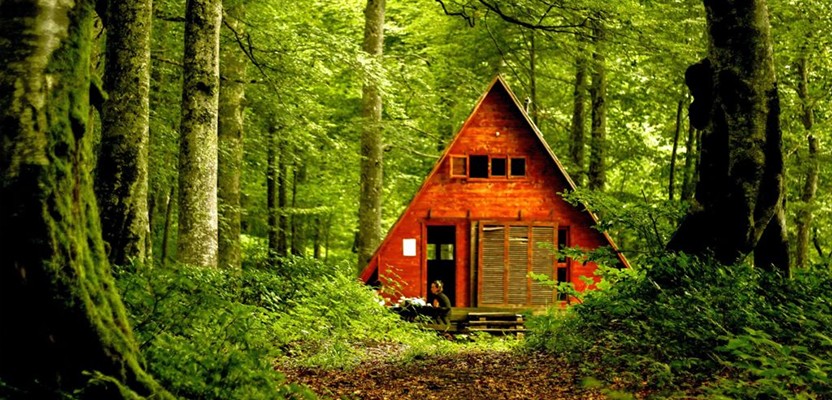
Adventure in Colchian Forests, on the Mtirala paths
27 kilometers away from Batumi `there is a place with springs gushing from the rocks and the leaf covered paths leading to a waterfall. The green smell of dense forest makes you breathe easier. Here in the shade of trees you can be caught in the rain and 15 minutes later the raindrops hanging from the leaves will sparkle in the sun.
This is Mtirala National Park with its peak of 1250 meters above sea level. Here, you will find unique, virgin Colchic forests and endangered, endemic species of plants such as Colchian willow, oak and blossoming Taxus baccata and Rhododendron ungerni in Spring.
It is very easy to get to Mtirala. If you can’t get right to the visitor center of the national park by car, then you can take #40 or any mini-bus passing by Chakvi, just for 70 tetri. Get off in Chakvi center and take a taxi to the visitor center for about 25 Gel.
To add exotics to our trip we chose an old, soviet car and headed toward Mtirala.
On the way to Mtirala, you pass by the village Khala and in the distance you can observe the villages Goradzeebi and Chaisubani spreading out in the mountains.

The road goes along the river Chakvi and you can see cold, pure springs gushing from the rocks. There are the narrowest, creaking bridges here and there across the river. You can stop the car and pass over, swaying from side to side. At the visitors center you will be suggested to hike different tracks. On any route of the protected area you will meet the residents of Chakvistavi village. The families we met live in the natural environment, having colored beehives in the yards, where you can buy pure basswood or chestnut honey.
In Mtirala Park, near the springs you can see worn wooden structures. These are small water mills, where, these days, corn is being ground as it was more than hundred years ago: millstones operated by the water energy grind grain into flour.
According to the locals, these watermills are more than a hundred years old. Most of them are locked, but operable. The locals say that curious tourists often want to enter the mills, but it is not advisable. The process of grinding has to be very clean as the flour is used for preparing “Mchadi” which, afterwards, is served with the tastiest “Borano”.
When you are hungry, the best decision is to order dinner at the family restaurant. The locals will serve you with traditional dishes made of home-grown products. Fruit, vegetables, meat and milk products are always domestic and fresh. That’s why the local dishes such as: Borano, Sinori, hot Khachapuri and many others have unforgettable taste.
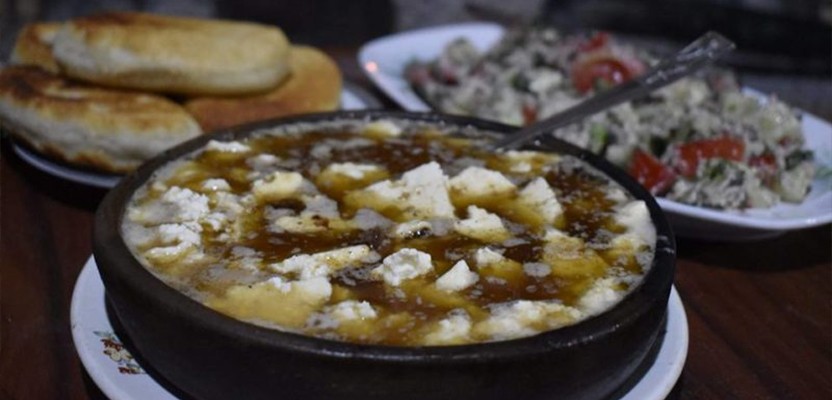
Here you can be served food in the fresh air, but in our case, the evening was cool and we decided to have supper by the fireplace. The hostess explains that “borano” should be eaten with “mchadi” which absorbs melted cheese and butter. This is the way we eat the famous Ajarian dish.
If you are a beginner and haven’t had any experience of hiking in the mountains, the ideal option for you will be 7 kilometer Chestnut Copse path, which goes along the Chakvistkhali River. You will pass through the road of box trees, cherry laurels and rhododendron bushes, leading to the 15-meter waterfall and the lake.
Cold Spring Trail is a 15 kilometer two-day route. Having chosen this trail, you will get into the wild nature and see the Colchic broadleaf mixed forest and beech copses, where scientific studies of wild fauna and flora often take place. On the way you’ll find picnic spots, camping places and fire pits. There are lots of directions along the tail that help you to orient.
After passing 15 kilometers, at the end of the Cold Spring Trail, at the height of 1250 meters, in the midst of trees you will reach a tourist shelter.
Extreme lovers can use a zip line and slide down a 200-meter long rope through the high trees. So hiking in the park, don’t deprive yourself of this pleasure. Having been safely attached to a line you spread your hands and fly.
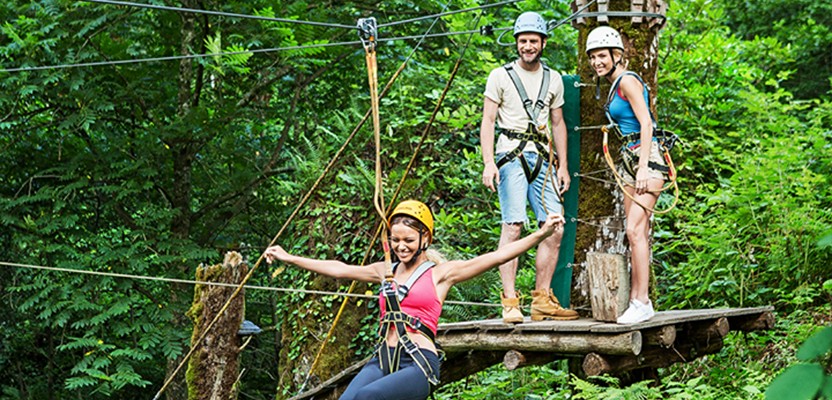
At one place in Mtirala Park, there is a quite unusual device for crossing the Chakvistskhali River. You will get from one bank to another by a wooden cable car invented by the native Khasan Gorjeladze. Just turn the wheel and you’ll get to the opposite side.
If it gets dark on your way back, you can rest at the open-air restaurant “Mtirala”, where everything is illuminated and, at the end of your hike, makes fantastic impression of a fairy tale with garlands hanging on the trees and the shimmering bridge.
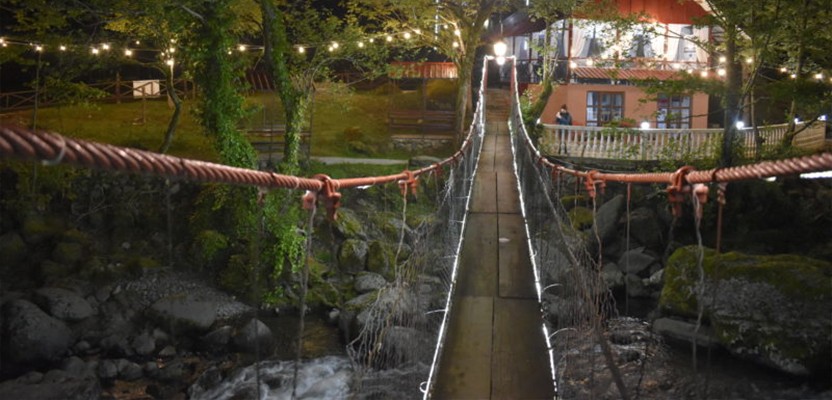
The name of the park- “Mtirala” means, that rain is the main part of the exotics and the wild nature of the place. At night, before going to sleep you can hear heavy rainfall sounds in rhododendron forest. No matter where you stay in a camp or a hotel, you will never forget the night spent in Mtirala. The main thing is to be properly equipped with a waterproof raincoat and rubber boots.
The tourist season in Mtirala Park officially runs from May to October, but don’t wait for the official dates. In April, you can also enjoy the blossoming Ungern Rhododendron and visiting the park at this time is really unforgettable impression.
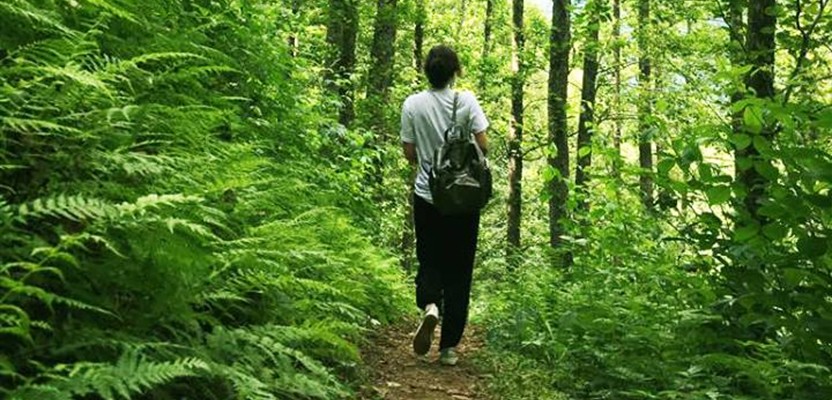
Service prices in Mtirala Park:
- Zip line (sliding down the rope): 15 GEL
- Tent : 10 GEL
- Backpack: 5 GEL
- Sleeping bag: 5 GEL
- Conference hall ( for 50 people): 100 GEL
- Transportation by horse : 50 GEL
- Picnic spot for 5 people – 10 GEL; for schoolchildren and students – 5 GEL
- Picnic spot for 10 people – 15 GEL; for schoolchildren and students – 10 GEL
- Camping place: 1 person – 5 GEL
- Rent a horse: 50 GEL – 1 day; contacts: Khvicha Kontselidze – tel: 558 65 39 62; Merab Kontselidze: 593 61 28 50
Tourist season runs from May through October
- The best period for birdwatching starts from the second half of August and lasts until the second half of October.
- Flowering season of endemic species: Ponto and Ungern’s Rhododendron- April-June; Voronov snowdrop – from March through the first half of April
- Zip line operates from May through October
Accommodation:
- Accommodation in a tourist shelter: 20 GEL per person;
Schoolchildren and students – 10 GEL
- Visitors center (Chakvistavi village): double room -50 GEL; Schoolchildren and students – 30 GEL
- You can spend night in a family hotel, the price can be negotiated



